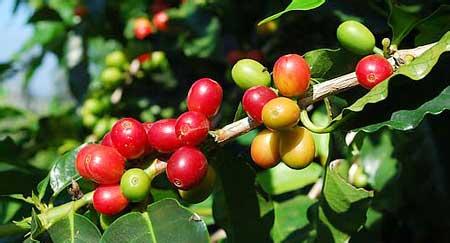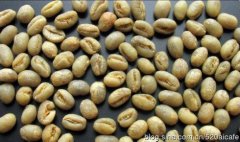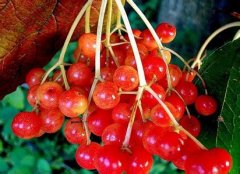A brief introduction to the treatment of Grinding degree and baking degree of full Tanzanian Coffee in Arusha Coffee Manor

Coffee is like the simple, frank and enthusiastic national character of Tanzania. Its refreshing acidity and medium mellowness complement sweet citrus and floral aromas. You can see that different ethnic groups produce different coffee flavors, while the same land gives birth to coffee trees and coffee exports from Tanzania (Tanzania) play an important role in the whole national economy.
In the past, the coffee industry in Tanzania has been dominated by manor cultivation, but now more than 85% are grown by small farmers. Many small farmers form cooperative organizations, the most important of which is the Kilimanjaro Cooperative Alliance (KilimanjaroCooperativeUnion, referred to as KNCU). Tanzanian coffee is sold by the Tanzanian Coffee Management Council (TanzanianCoffeeMarketingBoard, TCMB) to private exporters by auction. In the 1980s, most coffee sales in Tanzania shifted from auctions to coffee-shaped berries sold directly to the Tanzania Coffee Management Committee. Generally speaking, coffee beans in Tanzania have extraordinary quality. For example, the top quality AA coffee (ChaggaAA) from Tanzania, produced in the Moshi area near Mount Kilimanjaro, is famous for its full-grained and fragrant quality. Mount Kilimanjaro in Tanzania is 5895 meters above sea level, connected to Mount Meru and is the main production base of Kilimanjaro coffee. Mount Kilimanjaro is the highest peak on the African continent and the only snowy peak on the earth located on the equatorial line. It is "the roof of Africa" and "Snow White on the equator". The rich volcanic ash gives the coffee here a strong texture and soft acidity, with the characteristics of typical African coffee beans. Kilimanjaro AA is the highest grade of beans with high quality in all aspects. Medium or more moderate after baking has a strong aroma. Suitable for making individual or iced coffee Blackburn Estate from Ngorogoro is always an excellent variety and is the most highly rated variety in recent memory. The Ruvuma producing area also has a good flavor, which is the southern coffee with the northern gene. The beans of Kibo are bulky and seem to have been cooked at high temperature. The coffee in the south is clean and full, and its mild and unexciting flavor is second only to Kenya. In the past, our small batch of coffee beans from Nkoanekoli and Ngorongoro has represented a step forward compared to other producing areas.
The eastern coastal areas and inland lowlands of Tanzania have a savanna climate, while the western inland plateau has a tropical mountain climate, with an average temperature of 21-25 ℃ in most areas. More than 20 islands in Zanzibar have a tropical maritime climate, hot and humid all the year round, with an annual average temperature of 26 ℃. [6]
The types of rainfall can be divided into bimodal distribution and unimodal distribution. The areas with double bee rainfall include the provinces around the Lake Victoria basin, the northeast highlands, the coastal and inland northeastern. The bimodal rainfall area is characterized by two rainy seasons. The short rainy season occurs from September to December. The total rainfall can reach 200-500 mm. The long rainy season occurs from March to May, and the rainfall reaches 300-600 mm. The areas outside the double-bee rainfall area are all single-bee rainfall areas, with rainfall of 500-1000 mm from November to April, due to geographical location, economic, political and other reasons. People outside Tanzania consider Dar es Salaam to be the capital of Tanzania. In fact, Dar es Salaam is not the capital of Tanzania. It was the capital of German East Africa from 1891 to 1916. It was the capital of Tanganyika from 1961 to 1964 and later the capital of Tanzania. In 1974, the Tanzanian Parliament decided to move the capital to the inland town of Dorma.
Important Notice :
前街咖啡 FrontStreet Coffee has moved to new addredd:
FrontStreet Coffee Address: 315,Donghua East Road,GuangZhou
Tel:020 38364473
- Prev

Light sour Tanzanian coffee in the northern highlands of Gillimaza Manor Coffee cultivation market price
Individual production: brewing: to brew a good cup of coffee, in addition to fresh coffee powder and slightly harder water, but also a set of easy-to-use brewing tools. There are three main types of coffee machines in common use. Drip filter: wet the coffee powder with water and let the coffee liquid flow through the filter cloth or filter paper and flow into the container at the speed of natural fall. Basically, this way
- Next

A brief introduction to the History and Culture of the Origin and Development of the Snow vein Manor in Bolivia with medium acidity
Bolivia is a landlocked country, about 1/3 of the territory is the Andes, rugged terrain, high altitude. La Paz is known as the capital with the highest elevation in the world. Although there is no beautiful tropical seaside scenery, the lake scenery and the unique scenery of the Andes are also extremely nostalgic, and the Uyuni Salt Lake, known as the Mirror of the Sky, is a wonder of the world. No
Related
- Does Rose Summer choose Blue, Green or Red? Detailed explanation of Rose Summer Coffee plots and Classification in Panamanian Jade Manor
- What is the difference between the origin, producing area, processing plant, cooperative and manor of coffee beans?
- How fine does the espresso powder fit? how to grind the espresso?
- Sca coffee roasting degree color card coffee roasting degree 8 roasting color values what do you mean?
- The practice of lattes: how to make lattes at home
- Introduction to Indonesian Fine Coffee beans-- Java Coffee producing area of Indonesian Arabica Coffee
- How much will the flavor of light and medium roasted rose summer be expressed? What baking level is rose summer suitable for?
- Introduction to the characteristics of washing, sun-drying or wet-planing coffee commonly used in Mantenin, Indonesia
- Price characteristics of Arabica Coffee Bean Starbucks introduction to Manning Coffee Bean Taste producing area Variety Manor
- What is the authentic Yega flavor? What are the flavor characteristics of the really excellent Yejasuffi coffee beans?

